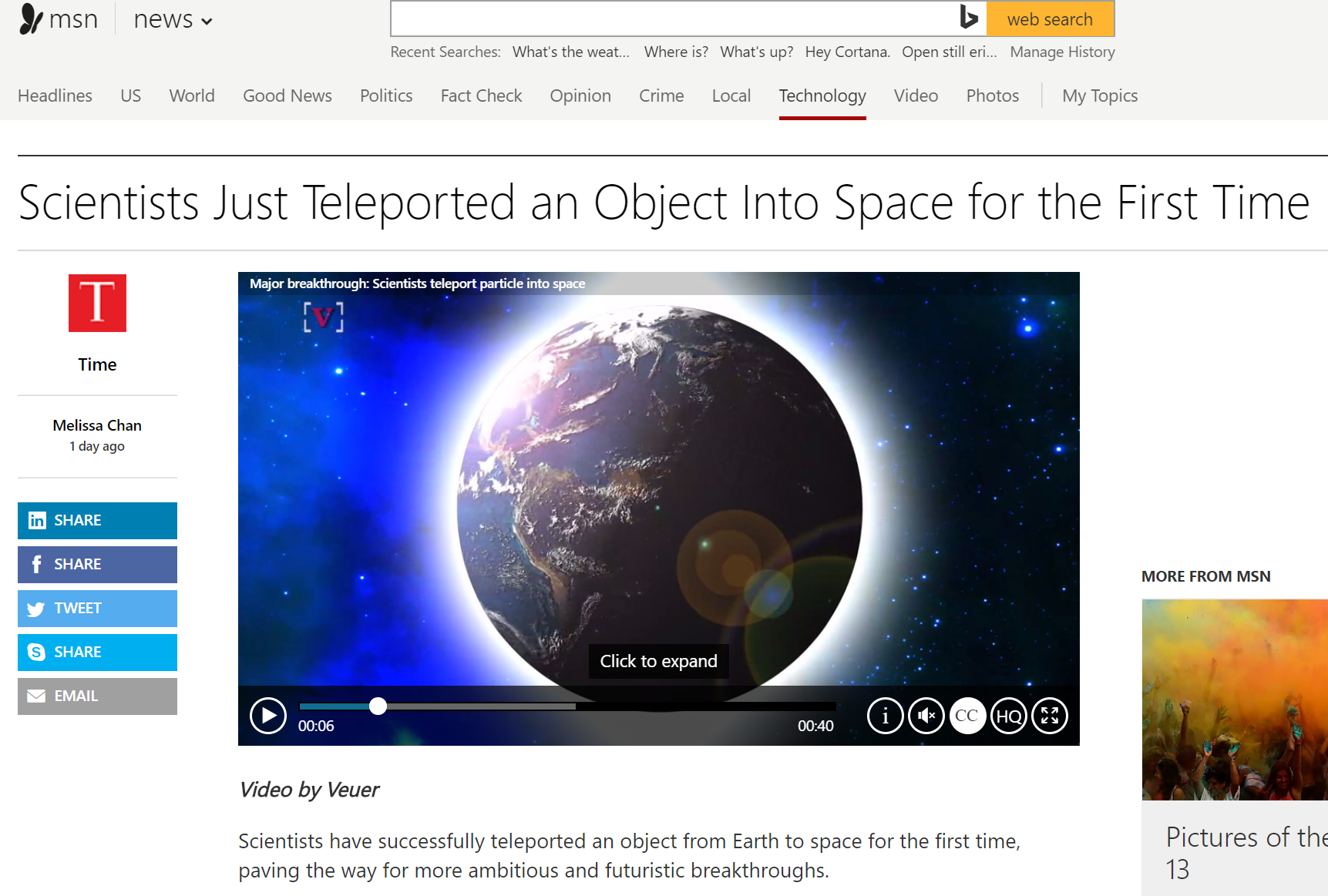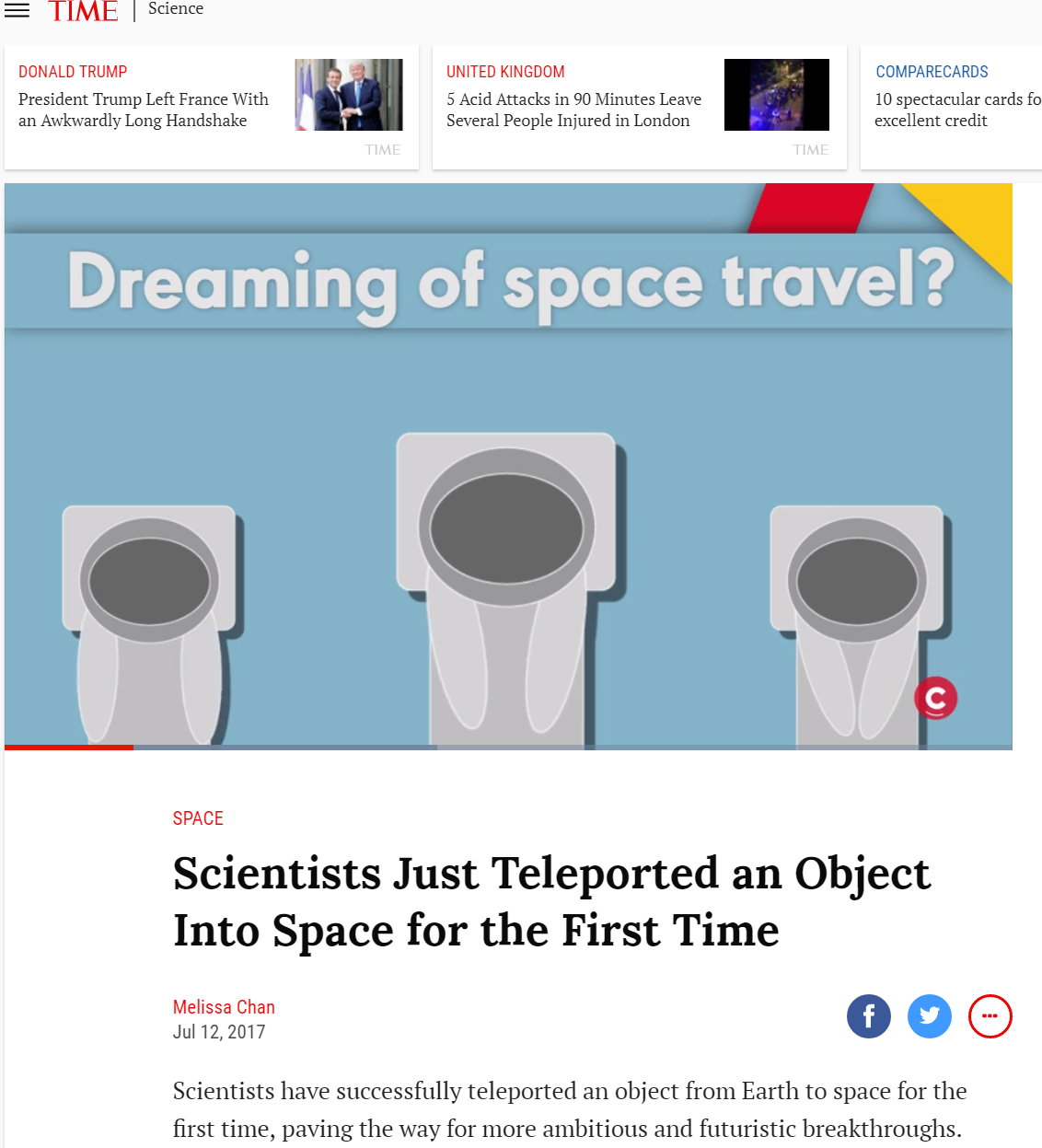Sadly, Scientists Have Not "Just Teleported an Object Into Space for the First Time"
Though I suppose that depends upon how one defines an "object."
Recently, this article has been making the rounds on social media. It's a reprint of this article, which cites this article, which reports on this research. I recommend clicking those links and reading them for yourself, but the headlines are the most important things to note:



Teleporting an object into space, huh? That's a bold claim. Regrettably, it is also incorrect. I hate dousing the excitement, and I want transporters just as much as the next person, but the real story itself is quite fascinating, and it represents a significant advancement in the technology of transferring of quantum information. So, let's find out what this team actually did!
From their abstract:
“...we report the first quantum teleportation of independent single-photon qubits from a ground observatory to a low Earth orbit satellite...”
The emphasis is mine, for it shows that what was teleported was not an object in the traditional sense, nor was it a photon, as the articles claim. Instead, it was a "qubit," which is the fundamental unit of quantum information. You have probably already heard of a "bit," which is the basic unit of binary information, and you probably also know that bits can have one of two values: 0 or 1. A qubit is similar to a bit except that instead of strictly being either a zero or a one, a qubit can be one, or the other, or any linear combination of the two!
For the math-savvy amongst you, a qubit might look like this: \begin{equation}\lvert\psi\rangle\ = \alpha\lvert 0\rangle\ + \beta\lvert 1\rangle,\label{140717:psi}\end{equation} where \begin{equation*}\lvert\alpha\rvert^2 + \lvert\beta\rvert^2 = 1.\end{equation*}
The important takeaway here is that neither bits nor qubits are physical objects. Instead, they are pieces of information that can be represented by said objects. For example, the physical state of a switch can represent a binary bit. When the switch is on, it represents 1; when it's off, that's a 0. A lot of people are familiar with that example. In less familiar territory, the physical state of a quantum particle can represent a qubit, and these physical states are described using wave functions such as \eqref{140717:psi}.
So let us then re-examine the team's claim: quantum teleportation of independent single-photon qubits. That's equivalent to saying single-photon wave functions, which again, are information and not objects. In other words, the researchers took the wave function of a photon on Earth and gave it to a photon on a satellite in orbit. Or, to use our binary analogy, they turned off a switch on Earth and turned another switch on aboard the satellite. No objects were teleported, not even photons, any more than the act of turning a switch off in one room and on in another teleports that switch.
That doesn't sound nearly as impressive, now, does it? Well, believe it or not, it actually is. Qubits can be very fragile constructs, and transporting them from one point to another is a considerable challenge. Nevertheless, it is a problem which must be overcome if we ever hope to build a network of quantum computers capable of passing qubits back and forth around the globe.
The World Wide (binary) Web revolutionized humanity, and with the successful transfer of qubits to space, a new revolution appears on the distant horizon. Exactly how this was accomplished is something we shall investigate next time.
Stay curious, my friends!
Aaron
